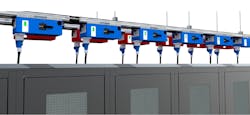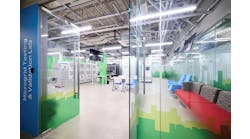Integral Coupling, the Busway & More Highlighted in New Anord Mardix Report
The busway. From starting within the automotive industry in the 1930’s and now evolving to widespread use in data centers, the power distribution technology has made its place.
Get the full report.
A new report from Anord Mardix aims to contextualize that evolution and present a fresh approach for 2020 and further. According to the company, “busway offers a high density, flexible power distribution solution for many applications.”
In recent years, according to the new report, the use of open channel busway has become the norm.
The open channel construction allows the plug-in (or tap off) sub-distribution units to be placed, theoretically, at any location along the busway, Anord Mardix says. What does this do?
“This enables the sub-feed to be positioned directly above or adjacent to its respective load, which in a data center environment would generally be the server cabinet,” the report states.
But first, it goes through traditional coupling, which one of the requirements is to couple together multiple sections of busway of up to 10-12ft in length to form the overall required length of busway.
“Designing safety directly into the components being installed on live busway can’t be overemphasized.”
And the challenge with open channel busway systems?
They do allow the ability for the installer to plug-in unit at any location along the busway … “in theory,” says Anord Mardix, but the company also states a potential challenge: The theory being that the power feed to the server rack or item of equipment can be located directly above or adjacent for ease of identification. However, the couplers present an issue to this theoretical management of the plug-in units.”
The report explores an approach called “integral coupling.”
Anord Mardix describes this tech via its Anord Mardix Databar busway, which according to the report “utilizes a unique male and female coupling system that is integral to the individual busway sections. The key component of this system is the beryllium copper spring couplers attached to the female end of each busway section.”
The report also covers the potential safety benefits and elements of the technology. Designing safety directly into the components being installed on live busway can’t be overemphasized, the report highlights.
Download the full report, “Busway: Safety and Reliability,” courtesy of Anord Mardix, to read further on fresh ways to integrate the busway into modern data centers.





